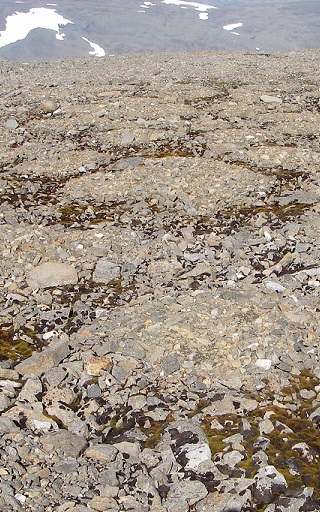 Group members
Group members
William Gutowski → Climate modeling
Chris Harding → GIS, data visualization
Neal Iverson → Glaciology, glacial geomorphology
Christina Patricola→ Climate variability and change, extreme weather/climate events, and high-resolution climate modeling
Al Wanamaker → Paleoclimatology, stable isotope geochemistry
Ian Williams → Climate & Earth system modeling
Xiaoqing Wu → Cloud & climate system modeling
Research topics
Comprehensive understanding of climate change and associated environmental responses requires studying modern climate processes, characterizing ancient change, and estimating future change with models that benefit from knowledge of both modern and ancient systems. We conduct regional and global climate simulations to explore the roles of atmospheric, oceanic and ice dynamics, clouds, and surface processes in climate change. We develop Holocene proxy-based records that reveal ocean temperature and chemistry and generate records of Pliocene and Pleistocene marine microfauna that indicate changes in Arctic climate and sea-ice extent. Other research is directed at glacial processes that affect sea-level rise and landscape development. Federal funding sources for these research projects are diverse and include the NSF, DOE, NASA, USDA, and NOAA.
The geography of this research is world-wide. Climate modeling includes, in addition to various regional studies in the U.S., major projects focused on climate systems of the Arctic, Africa, and East Asia. Field work of faculty and their graduate students takes them to locations as diverse as the Bering Sea, The Gulf of Maine, Iceland, Norway, and Switzerland.
Current research topics include (but are not limited to):
- Precipitation and temperature extremes, their underlying causes and future changes (Gutowski)
- Investigating the role of cloud, radiation and precipitation processes in the climate simulations of global water and energy cycle (Wu)
- Studies of climate variability and mechanisms of climate change in recent millennia in the northern North Atlantic Ocean via proxy records (Wanamaker).
- Simulating natural variability and anthropogenic change in tropical cyclone activity and tropical cyclone – ocean interactions using high-resolution climate models (Patricola)
- Laboratory, field, and theoretical studies of the sliding dynamics of glaciers, sediment transport by glaciers, and genesis of glacial landforms (Iverson, Harding)
Facilities
- The Meteorology Program manages a 17-node cluster with each node consisting of dual quad-core processors giving users access to 136 processor cores. The machine employs 2.4 GHz Intel Xeon E5620 processors based on Intel’s Nehalem microarchitecture and an Infiniband interconnect. Connected to the cluster is over 10 TB of fast storage and over 30 TB of total storage. The program also has access to a 400-node machine on campus, where each node has two quad-core AMD Opteron Processors 2354 (2.2 GHz) with 8 GB of memory and Infiniband networking. Also, the Meteorology Program maintains a large number of Linux servers, and Linux, Macintosh, and Windows desktop computers for data analysis.
- Stable Isotope Laboratory. The Stable Isotope Laboratory (SIL) is intended to be a hands-on teaching and research facility for the students and faculty at Iowa State University. The laboratory is devoted to performing continuous-flow isotopic (‰) and elemental (%) analyses of carbon (C), nitrogen (N), oxygen (O) and hydrogen (H) in organic and inorganic substrates (solids, liquids, and gases). The laboratory consists of a ThermoFinnigan Delta Plus XL mass spectrometer coupled with several sample introduction systems, including a GasBench II with a CombiPal autosampler, a Costech elemental analyzer and a TC/EA with a Conflo III interface. Additionally, the SIL operates a Picarro L1102-i Isotopic Liquid Water Analyzer with an autosampler for rapid measurements of deuterium and oxygen. The lab supports research in many disciplines, including oceanography, paleoclimatology, geology, hydrology, ecology, agronomy, and chemistry. Analyses of outside samples are also performed in the lab for a fee.
- Marine Sediments Laboratory. This laboratory houses a variety of tools that allow us to take marine sediments through a full range of analysis in order to create records of past climate, sea ice extent and duration, sea surface temperature, or marine productivity. Equipment in the lab includes a Beckman Coulter LS 13 320 Laser Diffraction Particle Size Analyzer for determining sediment grain size. The laboratory is equipped with both transmitted light and reflected light microscopes connected to digital still and video cameras to aid in identification of diatoms, foraminifera, and sediment mineralogy. We also use the scanning electron microscope housed in the Materials Analysis and Research Laboratory at ISU. Field equipment for sampling and coring sea ice and observing under-ice and benthic ecology include an ROV camera and an ice corer.
- Glaciology Laboratory. This laboratory houses the only device in the world for studying the sliding mechanics of glaciers. The ISU Sliding Simulator (ISUSS) rotates a large ring of ice, kept at its pressure-melting temperature, across either a rigid or deformable bed, while the drag on the bed, ice-bed separation, and other variables that control glacier speed and geomorphic effects are measured.
Students interested in pursuing research in Climate and Quaternary Science are encouraged to contact one of the group members or geology@iastate.edu.
